Cranberry festival highlights Ocean Spray’s economic importance to New Jersey
-
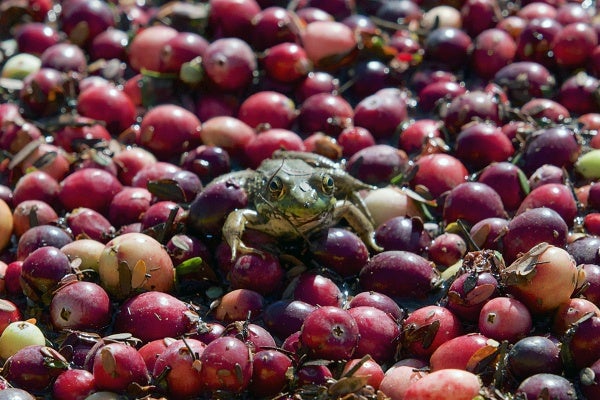
-
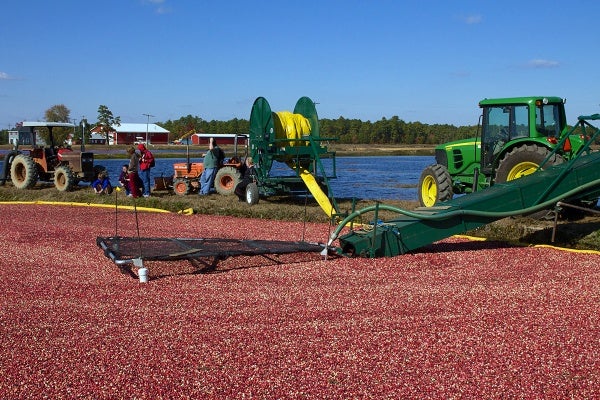
-
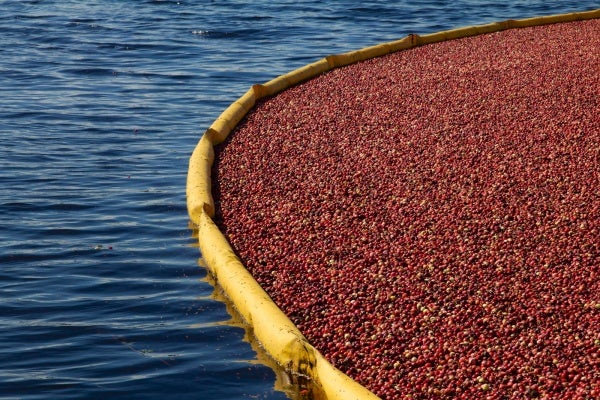
-

-
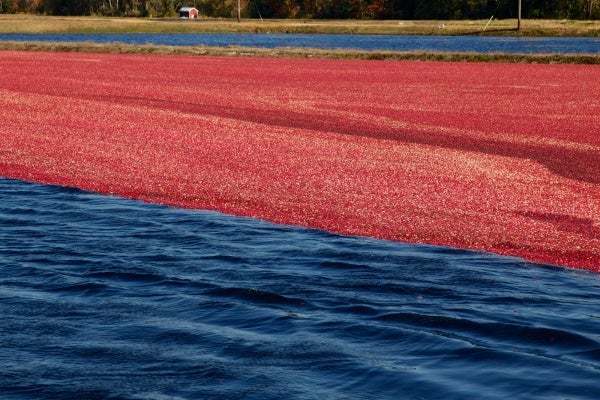
-
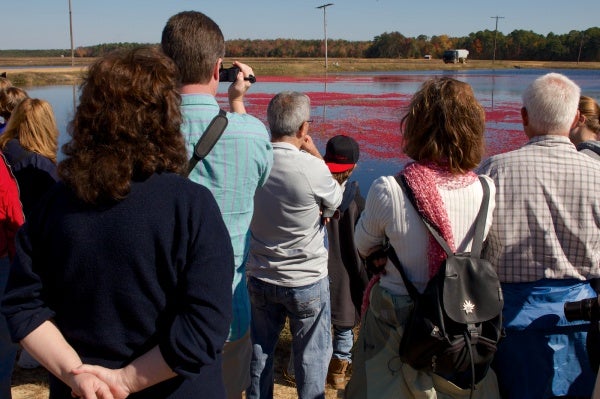
-

-
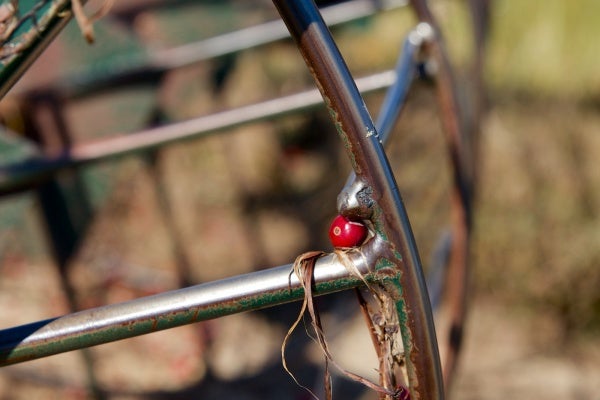
-
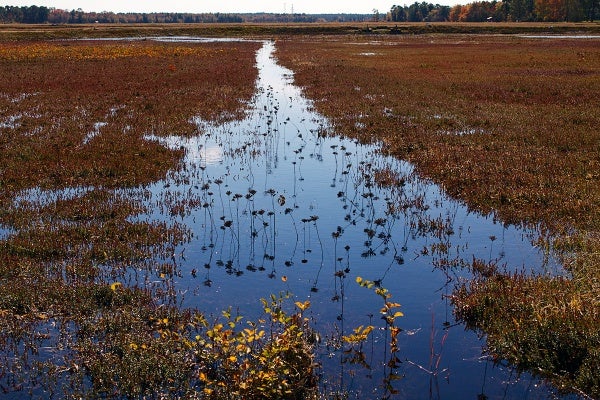
-

-

-

-

-
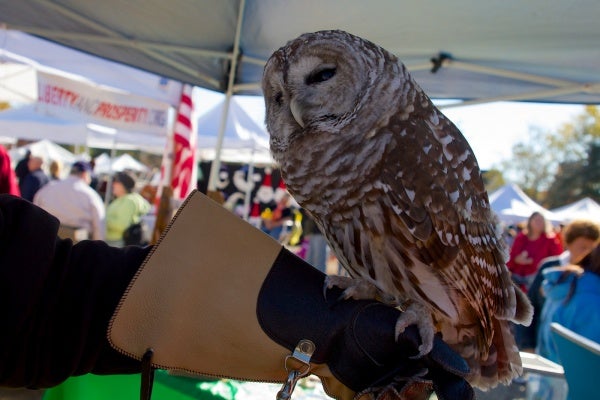
-
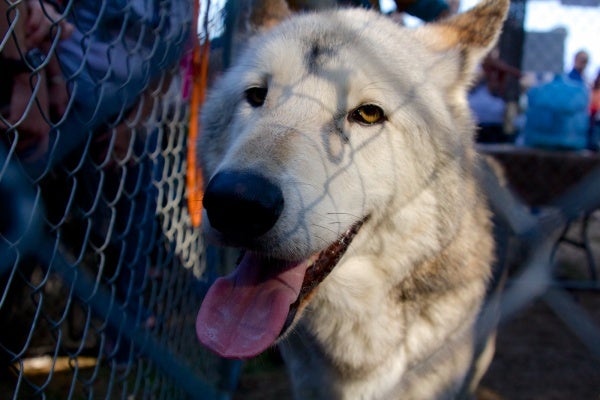
-
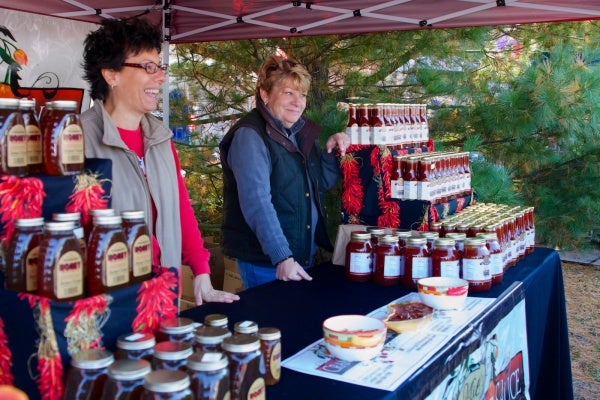
-
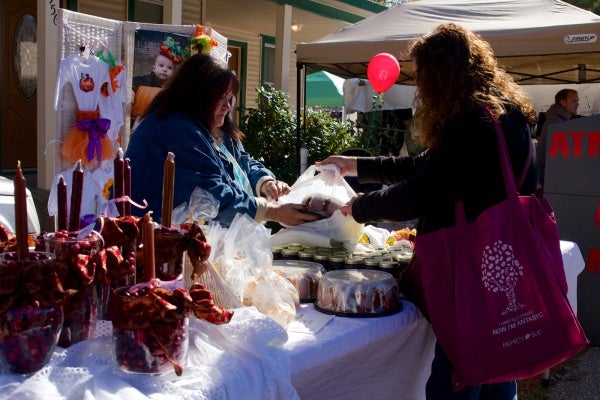
-

-

-

-

-
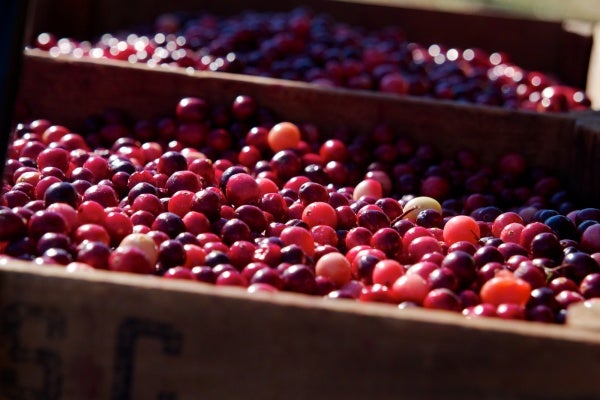
New Jersey cranberries. (Jana Shea/for NewsWorks, file)
What could be better suited for Indian summer weather than a free, outdoor festival celebrating a native fruit first harvested by the Lenni Lenape tribe? The 29th Annual Chatsworth Cranberry Festival took place this weekend in the town that bears its name, drawing huge crowds who came to celebrate the cranberry harvest.
The official portion of the festival was held on the large field across from the White Horse Inn, where vendors sold crafts and antiques. A food court, dubbed “The White Horse Cafe, situated behind the inn was also part of the official festival. Here attendees dined and enjoyed an all-day concert of country music courtesy of the Bullzeye Band. In front of the inn, the Cranberry Festival Committee sold a variety of cranberry laden baked goods and cranberry ice cream.
The festival, though touting to be about “everything cranberry” was limited in its cranberry offerings. This is because vendors were prohibited from selling baked goods and ice cream on the official festival grounds. “We don’t want it to take it away from us,” remarked Lynn Giamalis, Chairperson for the Festival Committee.
Near neighbors also got in on the party, stretching the vendors and eats for a mile down the main drag. Here is where folks could find more cranberry themed goods. Those interested in a trip down memory lane took in the antique car show held along Savoy Boulevard.
Preserving a piece of history
The festival was organized to raise money to rebuild Chatsworth’s historic White Horse Inn. The inn, located on Route 563, was built in 1859 but had suffered extensive deterioration. The more than $500,000 renovations were completed just this year. “Every year we were able to do a little bit more,” shared Giamalis.
The site is the property of Woodland Township and is open for public tours each Wednesday from 11 a.m. until 2 p.m. Giamalis explained that tours of the building were not held during the festival because the Festival Committee needed the space to use as its staging area.
Festival volunteer, Jim Wasson says the newly rehabbed property is now being used as a community center for events like the annual town picnic and summer movie nights. Though the inn has now been restored, the festival will be returning next year.
Cranbassadors
About quarter mile from the festival, folks desiring to learn more about New Jersey’s important crop could sign up to take a tour of a local cranberry bog. The interpretive one-hour tours of the wet-harvest process were given by Cranbassadors, together with Dr. Peter Oudemans, from Rutgers University’s Phillip E. Marucci Center for Blueberry and Cranberry Research.
Barbara Rheault, an educator with Mullica Township Schools started the Cranbassadors middle school program. The students, working with the American Cranberry Growers Association and Dr. Oudemans “learn everything there is to know about the science, nature and culture of cranberries, the cranberry industry and the Pine Barrens.”
Rheault, whose family has been farming in Atlantic County since 1854, explained that cranberry bog tours had once been a part of the Chatsworth Cranberry Festival, but “that ended several years ago and there’s been this lack of public access to the bogs.” The Cranbassadors program provides an opportunity for students to showcase the extensive knowledge they’ve gained by educating the public.
Harvest
Rheault says most people do not realize that cranberries grow on vines or shrubs, not in the water. The water-filled bogs that people are used to seeing in Ocean Spray television commercials are a result of the wet-harvest process. “That wet-harvest process virtually revolutionized the entire way cranberries were farmed,” Rheault said.
Because of four air chambers inside each fruit, cranberries are naturally buoyant. Flooding the sandy bog causes the vines to rise up and then motorized water reel harvesters, called “beaters” are used to remove berries from vines. Cranberries are then corralled using the same type of plastic yellow booms used for oil spill containment. Farm workers push the berries into a vacuum which draws the fruit onto a conveyor belt that loads the harvest into trucks.
The fruit gets trucked to the Ocean Spray Cranberries, Inc. receiving facility to undergo quality control and cleaning. The Chatsworth receiving station handles approximately 50 million pounds of cranberries each year. Only dry-harvested fruits wind up in bags or containers at area markets. Wet-harvested fruit will be eventually processed into juice in Massachusetts, or Bordentown, New Jersey. Ocean Spray will be relocating its Bordentown bottling plant to Lehigh County, Pennsylvania in September 2013.
Ninety-five percent of New Jersey’s cranberry harvest is sold to Ocean Spray.
New Jersey’s bounty
Cranberries are one of the few native fruit species of North America, which include the blueberry and concord grapes. Cultivation began in New Jersey around 1835 with many of today’s cranberry farms descending from original growers. The state, which is the third largest producer of cranberries in the United States, has approximately 3,100 acres of cranberry bogs.
Dr. Oudemans noted that while there are no organically grown cranberries in New Jersey, growers employ integrated pest management (IPM) only in the early months. For the remainder of the growing season, the cranberries are grown without pesticides and the bog water supply is kept pure.
Cranberry growers preserve ten acres of wetland bogs for every acre of cranberry bog in order to ensure the integrity of the bog’s water supply. Only food-grade vegetable oil is used for all machinery involved in the harvesting process. The has resulted in 31,000 acres of wildlife habitat preservation in New Jersey’s Pine Barrens.
“Our cranberry farmers are probably the best environmentalists, because everything has to be extremely pure.” Rheault asserted.
WHYY is your source for fact-based, in-depth journalism and information. As a nonprofit organization, we rely on financial support from readers like you. Please give today.




